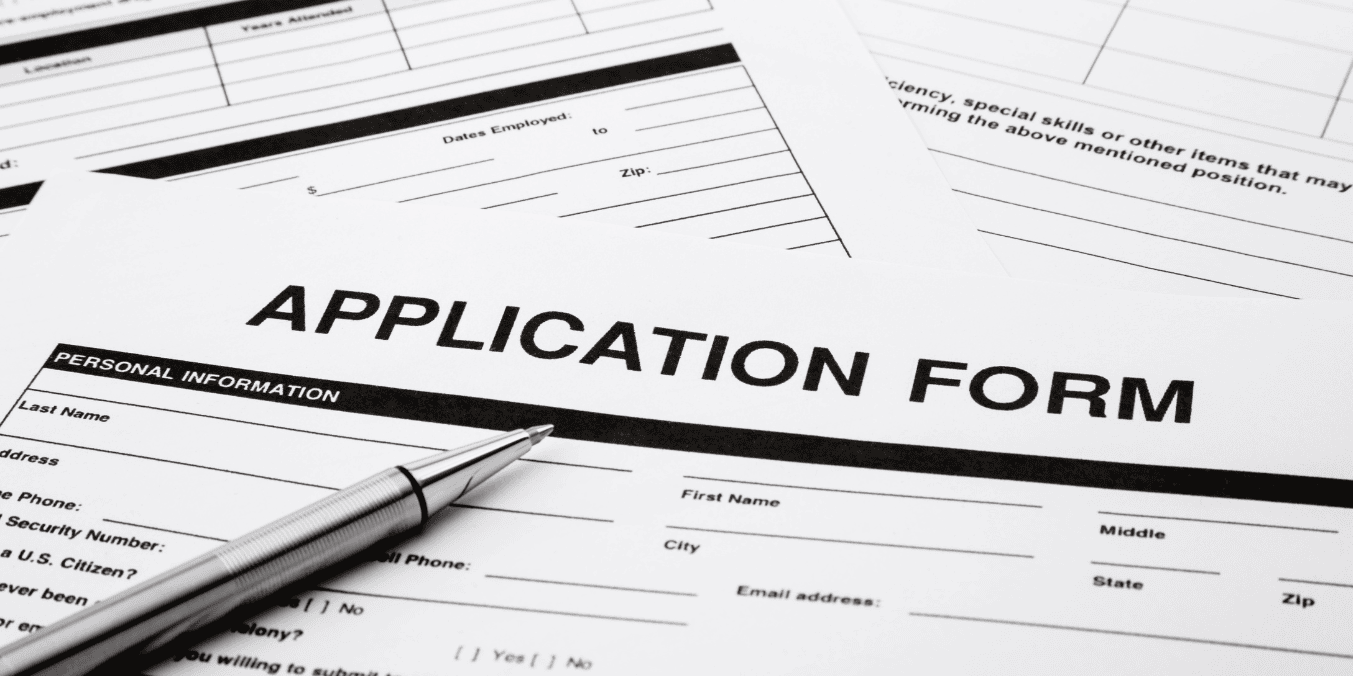Embarking on a spousal sponsorship application in Canada is a significant step towards reuniting with a loved one. However, the process can be complex, and even small errors can result in serious consequences, such as processing delays or application rejection. Understanding the common mistakes made on spousal sponsorship application forms is crucial for achieving a smoother and more successful outcome.
This guide aims to help you navigate the intricate application process by highlighting the common mistakes made on spousal sponsorship application submissions. We’ll cover everything from incomplete documentation to misinterpreting eligibility criteria, providing insights to help you avoid these pitfalls and increase your chances of approval.

Canadian Immigration Consultant
Let our expert team of Canadian immigration consultants guide you through the complexities of Canada’s immigration process. We provide personalized, step-by-step support to ensure a smooth and successful journey to your new life in Canada.
What is a Spousal Sponsorship Application?
A spousal sponsorship application is a process where a Canadian citizen or permanent resident sponsors their spouse, common-law partner, or conjugal partner to become a permanent resident of Canada. The main goal is to allow families to reunite and live together in Canada, provided they meet specific eligibility criteria. The sponsor must prove that they can financially support their partner, ensuring that the sponsored individual does not require social assistance.
Understanding the fundamentals of the spousal sponsorship process is essential to avoid common mistakes made on spousal sponsorship application forms. These applications require detailed documentation proving the legitimacy of the relationship, along with evidence of the sponsor’s financial stability. Failing to meet these requirements or overlooking important details can result in significant delays or even refusals.
Before starting the application, it is crucial to thoroughly review the eligibility requirements set by Immigration, Refugees and Citizenship Canada (IRCC). Applicants must meet all specified conditions, such as providing proof of a genuine relationship and undergoing a medical examination. Awareness of these requirements helps prevent many of the common mistakes made on spousal sponsorship application processes.

8 Common Mistakes to Avoid on a Spousal Sponsorship Application
Avoiding the following mistakes can significantly improve your chances of a successful application:
1. Submitting Incomplete Documentation
One of the most frequent common mistakes made on spousal sponsorship application forms is submitting incomplete documentation. Ensuring that all required documents, such as proof of identity, relationship evidence, and financial records, are included and up-to-date is crucial. Missing documents can lead to requests for additional information or delays, which can significantly extend the processing time.
2. Failing to Meet Eligibility Requirements
Another common error is not fully understanding or meeting the eligibility criteria. The sponsor must meet specific requirements, such as financial stability and legal status in Canada, while the applicant needs to provide sufficient proof of the relationship’s legitimacy. This can involve demonstrating shared finances, joint bank accounts, or other forms of cohabitation. Thoroughly reviewing IRCC guidelines can help ensure that you avoid one of the most common mistakes made on spousal sponsorship application processes.
3. Providing Inaccurate Information
Accuracy is critical throughout the application process. Providing inaccurate or misleading information can result in the refusal of your application and may also have long-term consequences, such as being barred from reapplying for a period of time. Always double-check all information and ensure that everything is truthful and consistent across all forms and documents. This will help you avoid a major common mistake made on spousal sponsorship application forms.
4. Missing Deadlines
Failure to meet important deadlines, such as those for submitting documents or responding to IRCC requests, is another common mistake made on spousal sponsorship application processes. Missing deadlines can significantly delay the processing of your application or even result in a refusal. Staying organized and keeping track of key dates will help you avoid unnecessary setbacks.
5. Overlooking Changes in Circumstances
Life changes, such as a change in marital status, the birth of a child, or changes in financial circumstances, can have an impact on your application. It is essential to promptly notify IRCC of any changes to avoid complications. Failing to update your application with new or relevant information is a common mistake made on spousal sponsorship application submissions that can jeopardize the outcome.
6. Not Seeking Professional Guidance When Needed
Navigating the spousal sponsorship application can be daunting, especially when dealing with complex requirements or unique circumstances. Some applicants underestimate the value of seeking professional help, such as hiring an immigration consultant or lawyer. A professional can help you avoid common mistakes made on spousal sponsorship application forms and ensure that your submission meets all the necessary requirements.
7. Failing to Provide Adequate Proof of Relationship
Insufficient evidence to prove a genuine and ongoing relationship is one of the leading causes of spousal sponsorship application refusals. Applicants should include a variety of evidence, such as photographs from different occasions, records of communication, shared financial documents, and affidavits from friends or family members who can attest to the authenticity of the relationship. To avoid this common mistake made on spousal sponsorship application processes, make sure the evidence is personalized and diverse, showcasing different aspects of your life together.
8. Not Preparing for the Medical Examination
Every applicant must undergo a medical examination by an IRCC-approved physician. Failing to book the examination early enough, or providing inaccurate or incomplete medical information, can result in delays or even the refusal of your application. Be sure to prepare for this requirement and submit your medical results promptly to avoid any setbacks.

How to Avoid These Common Mistakes
Avoiding common mistakes made on spousal sponsorship application submissions can lead to a smoother and more successful process. Here are some practical tips to help ensure a well-prepared application:
1. Double-Check All Forms and Documentation
Review your application forms and supporting documents thoroughly before submission. Ensure every section is completed, all signatures are included, and all supplementary evidence is up-to-date. Carefully following the official IRCC checklist can help you avoid common errors such as forgetting to include crucial documents.
2. Understand the Eligibility Criteria Thoroughly
Before applying, take the time to understand the eligibility requirements for both the sponsor and the applicant. Confirm that you meet all the criteria, including financial obligations, legal status in Canada, and relationship requirements. This step can help prevent one of the most frequent common mistakes made on spousal sponsorship application processes: not meeting basic eligibility standards.
3. Stay Organized with a Document Management System
Utilize a digital or physical system to keep track of your application documents and important dates. Organizing your documents can help prevent common mistakes made on spousal sponsorship application forms, such as missing deadlines or losing track of required paperwork.
4. Seek Professional Guidance When Needed
If you find any aspect of the application confusing or overwhelming, consider consulting with an immigration lawyer or a regulated Canadian immigration consultant. They can help you navigate the process, avoid common mistakes, and ensure your submission meets all requirements.
5. Be Proactive About Communication
Maintain clear and proactive communication with IRCC. If there are any changes in your circumstances, or if additional information is requested, respond promptly. This will help you avoid delays related to common mistakes made on spousal sponsorship application cases due to insufficient communication.
6. Provide Detailed and Varied Evidence of Your Relationship
To avoid common mistakes, include diverse evidence that shows the authenticity of your relationship. Submit photos from different occasions, communication logs, and joint financial records to demonstrate a genuine, ongoing relationship.
Consequences of Mistakes on Your Application
Mistakes in your spousal sponsorship application can lead to serious consequences, some of which may be difficult to reverse:
- Processing Delays: Errors in your application can cause significant delays, as IRCC may request additional information or documents.
- Risk of Application Refusal: Certain common mistakes made on spousal sponsorship application submissions, such as failing to meet eligibility requirements or providing inaccurate information, can result in outright refusal.
- Increased Costs: Mistakes can lead to extra expenses, such as legal fees for appeals or costs associated with submitting a new application.
- Emotional Stress: Dealing with a delayed or refused application can be stressful and emotionally taxing for both the sponsor and the applicant.
What to Do if Your Application is Refused
If your application is denied due to common mistakes made on spousal sponsorship application forms, consider the following steps to address the situation:
1. Understand the Reasons for Refusal
Carefully review the refusal letter from IRCC, which will outline the reasons for the decision. Understanding the specific mistakes that led to the refusal can help you determine the best course of action.
2. Reapply with a Stronger Application
If the refusal was based on errors or missing information, you may choose to submit a new application. Correcting the common mistakes made on spousal sponsorship application submissions in your initial attempt is crucial for a successful reapplication.
3. File an Appeal if Applicable
In some cases, you may have the option to appeal the decision to the Immigration Appeal Division (IAD). The appeal process can be complex, so it’s recommended to seek professional assistance from an immigration lawyer.
4. Strengthen Your Evidence of Relationship
If your application was refused due to insufficient proof of a genuine relationship, gather more detailed and varied evidence before reapplying. This can improve your chances of approval.
Conclusion
Navigating the spousal sponsorship process can be challenging, but understanding the common mistakes made on spousal sponsorship application forms and knowing how to avoid them can significantly increase your chances of success. Being thorough, meeting all eligibility requirements, and ensuring your documentation is complete can help minimize the risk of delays or refusals.
How We Can Help
At Wild Mountain Immigration, our experienced team of certified Canadian immigration consultants is here to help you navigate the complexities of the immigration system. Whether you’re applying for permanent residency, a work permit, or dealing with a complex immigration case, we provide personalized support tailored to your needs.
Contact us today to learn how we can help you achieve your Canadian immigration goals.
FAQs
Common mistakes include incomplete documents, failing to meet eligibility requirements, and providing inaccurate information.
Sponsorship can be denied due to insufficient proof of a genuine relationship, missing documents, or unmet eligibility criteria.
Processing time usually ranges from 12 to 18 months, depending on whether it is an inland or outland application.
You may reapply, appeal the decision, or seek professional advice to strengthen your case.
Canadian Immigration FAQs
Find quick answers to the most common questions about Canadian immigration, visas, and permanent residency.
LMIA Costs Explained: How Much Does LMIA Cost in 2024?
For Canadian employers seeking to hire foreign workers, a Labour Market…
Can I Leave Canada After Applying for Spousal Sponsorship?
When applying for spousal sponsorship in Canada, many applicants wonder,…
Who Can Apply for BOWP (Bridging Open Work Permit) in Canada?
If you’re transitioning from temporary status to permanent residence in…
Start Your Canadian Immigration Journey
Our experts make the process clear, stress-free, and successful, so you can move forward with confidence and focus on what matters most.

Contact Us
Immigration questions and service enquiries
Consultation
Speak to an expert
immigration consultant
"*" indicates required fields



